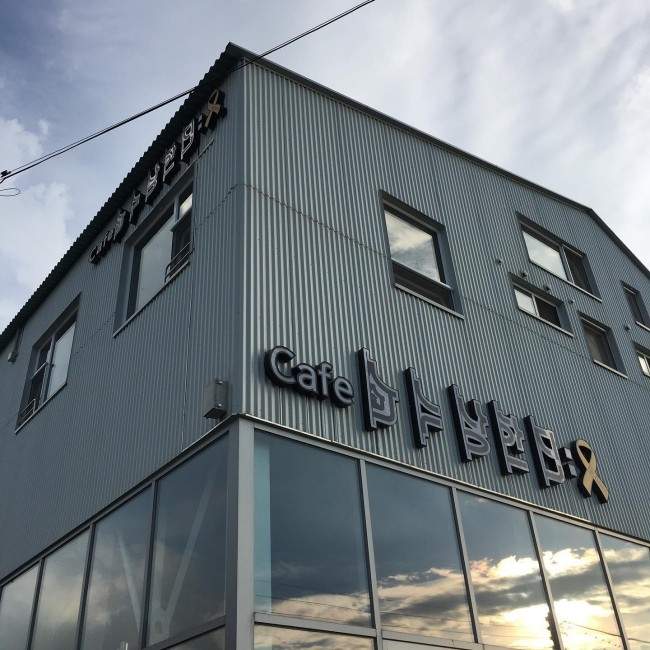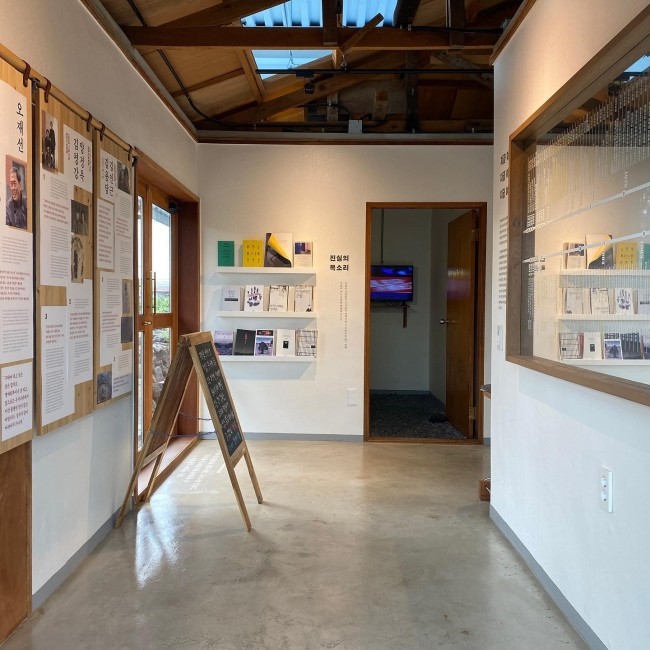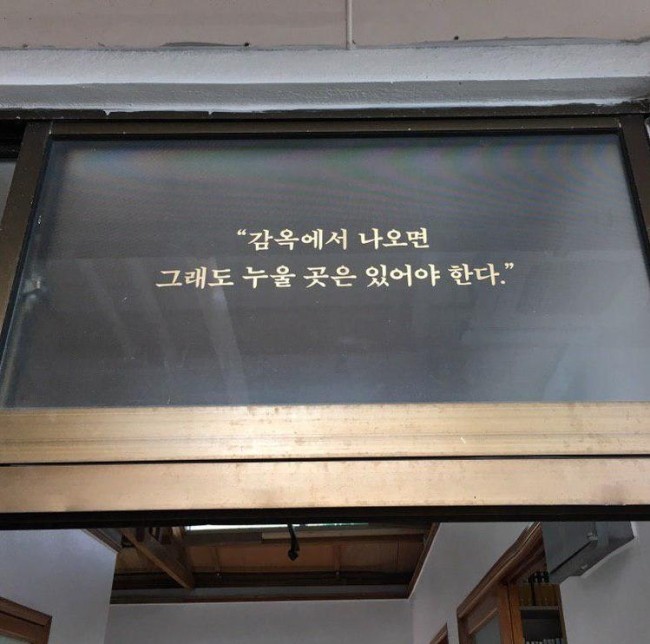 |
||
| ▲ Photo=Suspicious House | ||
14-4, Doyeon 3-gil, Jeju-si. This is the address of “Suspicious House,” which opened doors on the afternoon of June 22nd, 2019. The shape of the house is as strange as the name. A house is housing another house inside. On the first floor, there is an old house that has seen many years, and surrounding it is a temporary building that looks like new construction. What’s the deal with this odd house that appeared in Jeju?
Both the old house inside and the address mentioned above are owned by Jeju resident Kang Gwang-bo. He is a victim of state violence who had been falsely accused as a “spy” for years. It was 1979 when Kang was incriminated as a spy. He had smuggled to Japan in the early 1960s to meet his father, who had fled to Japan during the Jeju Uprising. In 1979, he was caught for the illegal trip and deported to Jeju. Within a few months of his arrival, he was suddenly detained by the police and tortured for 65 days for being a “spy.”
 |
||
| ▲ Photo=Suspicious House | ||
He continued to suffer the same hardship. Seven years later, in 1986, he was once again threatened and tortured on charges of espionage, after which he was sentenced to seven years in prison and seven years of suspension of qualification. It wasn’t until 2017 that he was found not guilty. Kang finally obtained “innocence” after filing a retrial for the fabricated spy case. It had been 31 full years since the state had stigmatized him as a spy.
This house was built by his parents while he was in prison, thinking of their son. They knew that he couldn’t enjoy a normal life in this society once he was branded as a spy. The parents created this space with their own hands to provide shelter to lay his body down, however small it is. Since then, Kang has fought for his retrial with this house as his starting point. In solidarity with the neighbors who were also accused as “spies,” he struggled to clear his name and finally proved his innocence.
 |
||
| ▲ Photo=Suspicious House | ||
Byeon Sang-cheol, the secretary-general of Here for Now, is the one who planned Suspicious House. “When planning the exhibition space, it was most important to save this house that Mr. Kang let us use,” said Byeon. He continued, “It is the home of my neighbor who has spent suspicious years as an accused spy after the Jeju Uprising. Here, we can look back and remember the victims of state violence who have been robbed of their lives.”
The interior of Suspicious House is composed of exhibition space, a cafe, and a guest room. Kang’s original house is the exhibition hall, and the newly built house on top has space for his residence. The structure of the exhibition is divided into three sections: “The story of Gwang-bo,” “The Age of Loss,” and “Here for Now.” “The Story of Gwang-bo” reproduced the room where Kang used to live. The inside is decorated with a chronology of his personal history when he was accused as a spy and several of his drawings.
 |
||
| ▲ Photo=Suspicious House | ||
“The Age of Loss” is Kang’s library, which includes the books he read while serving in prison, personal items he used at the time, maps indicating the whereabouts of victims who were accused as spies, and newspaper articles and materials related to spies at that time. It duplicates the image of a dark room that resembles his prison days.
Finally, in “Here for Now, the Voice of Mr. Neighbor’s Truth,” the stories of Jeju people who were also convicted with Kang are included as photos, text, and videos. Through the stories of the victims, the exhibition suggests you to think about what we need to remember.
“I hope works like state, violence, victims, and memorials don’t sound just abstract at Suspicious House. Things that happened to him were not particular. They happened to your neighbors. I hope visitors could understand and recognize that anybody around us can become such a victim,” requested Byeon.
Jeju Weekly editor@jejuweekly.com






